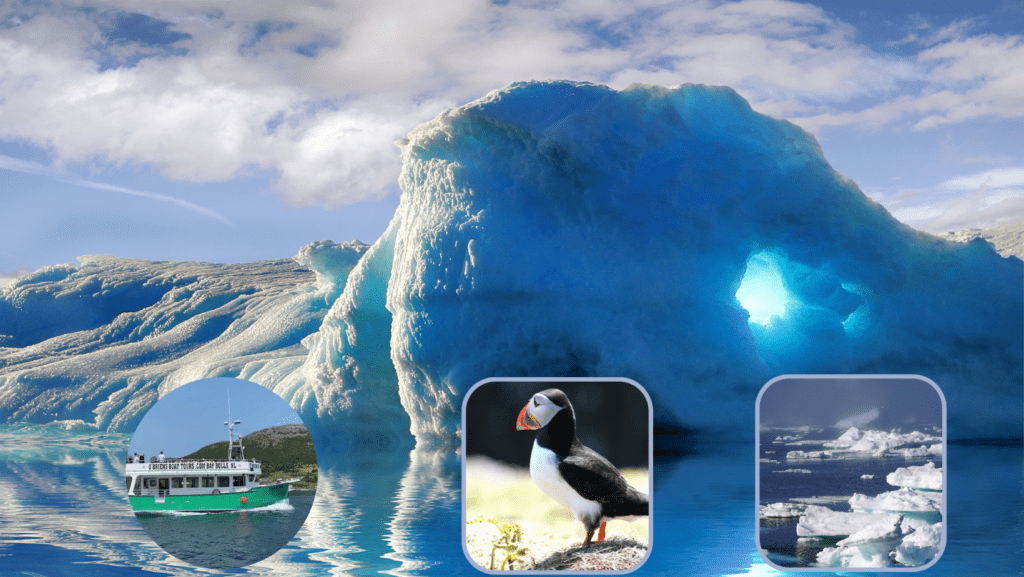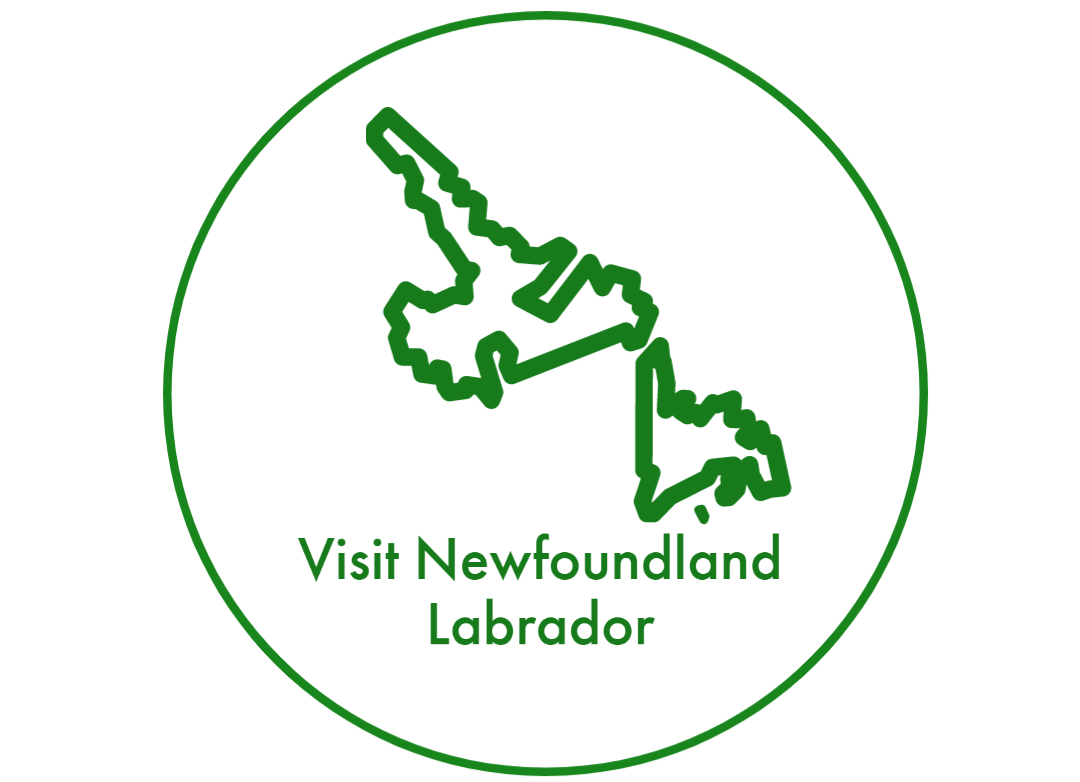How to Discover Icebergs in Newfoundland
This is How to Discover Icebergs in Newfoundland and Labrador.
When should I visit Iceberg Alley?
In Newfoundland and Labrador, there is a section of coastline known as “Iceberg Alley” where icebergs can be viewed during the iceberg season.
When the icebergs are most plentiful and visible, from late May to early June to August is the ideal time to explore Iceberg Alley. Mid-June is typically the best time to see icebergs. However, this might change from year to year, depending on the weather and ocean conditions. Therefore, it’s better to schedule your visit for early in the season if you want to view the biggest and most impressive icebergs because they will only have a little time to melt and disintegrate. Yet it’s crucial to remember that iceberg sightings can be erratic and change from day to day.

Can you see icebergs in St John’s?
In St. John’s, Newfoundland, it is possible to observe icebergs. Still, encounters are not common because the city is not situated along the main route of “Iceberg Alley,” where the majority of the icebergs are gathered. While the majority of icebergs tend to follow the coast of the island’s western and northern shores, St. John’s is situated on Newfoundland’s eastern coast. Nonetheless, from St. John’s or the nearby locations, it is feasible to see these magnificent natural wonders during years when there are a lot of icebergs or when ocean currents bring icebergs closer to the city. It’s a good idea to check with regional tourism offices or visit icebergfinder.com for up-to-date information to maximize your chances of spotting icebergs.
Getting Around Newfoundland and Labrador
Booking a Rental car is the easiest way to get around Newfoundland and Labrador. The province is vast and remote, and public transportation can be limited. A car rental lets you explore at your own pace and visit off-the-beaten-path destinations.
More Newfoundland and Labrador Travel Guides
- Best Towns In Newfoundland For A Relaxing Weekend Getaway
- The best things to do in Twillingate
- Colourful Northern Lights In Newfoundland And Labrador Sky
- The Best Trip Ideas for Newfoundland
Where is the best place to see icebergs in Newfoundland?

There are several fantastic sites along the coast to witness these enormous natural wonders, and Newfoundland is recognized for its magnificent iceberg sightings. If you’re interested in Whale watching, the best time to visit is from mid-June to early August, when humpback whales are most active. Plan ahead by booking tickets several months out. Book your ticket here. In Newfoundland, some of the top spots to watch icebergs are:
Twillingate: Known as the “Iceberg Capital of the World,” this small community on Newfoundland coast is a well-liked destination for iceberg viewing excursions.
Bonavista: This charming community on Newfoundland’s east coast is home to the famous Cape Bonavista Lighthouse and provides fantastic views of icebergs from the coastline.
St. Anthony: The Grenfell Interpretation Center, which has exhibits about the history of the island’s northernmost point. St. Anthony is an excellent place to watch icebergs.
Fogo Island is a beautiful island located off the northeast coast of Newfoundland. From the shore, it’s an excellent place to view icebergs.
The old fishing community of Battle Harbour, located on Labrador’s coast, is a fantastic place to see icebergs.
The best time to see icebergs in Newfoundland
In Newfoundland, late May through early June through August is often the greatest period to watch icebergs. The weather is also often better for outdoor activities at this time of year because the icebergs are most plentiful and visible. Mid-June is normally when you can see icebergs along the shore, making it the best time to see them. Iceberg sightings can be unpredictable and change yearly, depending on the weather and ocean conditions, so it’s crucial to keep this in mind. It’s a good idea to check with regional tourism offices or visit icebergfinder.com for the most recent information on iceberg sightings and locations to enhance your chances of seeing icebergs.
How many icebergs are on the Newfoundland coastline?
In Newfoundland, the number of icebergs can fluctuate significantly from year to year and even from day to day. During the peak iceberg season, there may be dozens to hundreds of icebergs along Newfoundland and Labrador’s coast, which lasts from late May to early June till August. However, depending on the weather and ocean conditions, there can be fewer icebergs in some years than others. Therefore, it’s a good idea to check with regional tourism offices or visit icebergfinder.com, which offers up-to-date information on iceberg sightings and locations, to acquire a more precise estimate of the number of icebergs currently in the area.
What causes the colour and cracking in icebergs?
A number of elements, such as the ice’s composition, the iceberg’s age, and exposure to the environment, contribute to the hue and cracking of icebergs. An iceberg’s hue might change based on the kind of ice it is made of. The natural tensions and pressures that take place when the iceberg moves across the ocean can cause cracking in icebergs. Icebergs can shift and tilt as they float, which can result in the formation of cracks. Icebergs can crack and break apart when exposed to wind and waves. The ice can also expand and compress as it freezes and thaws as icebergs melt because water can enter into fractures and cracks. This process can potentially deepen and enlarge existing cracks and contribute to the creation of new ones. Ultimately, iceberg colour and cracking is a natural, ever-changing process influenced by various environmental conditions.
How fast do icebergs move?
Ocean currents, winds, the size and structure of the iceberg itself, and other variables all affect how quickly icebergs move. Icebergs often move at speeds between less than 0.5 knots to a few knots, which is comparatively slow compared to other things in the water. Larger icebergs can, however, occasionally move more quickly, especially if they become stuck in strong ocean currents or wind patterns.
Iceberg sightings can be unpredictable and change yearly depending on the weather and ocean conditions, so it’s crucial to keep this in mind. It’s a good idea to check with regional tourism offices or visit icebergfinder.com for the most recent information on iceberg sightings and locations to enhance your chances of seeing icebergs.
These are the best travel planning resources you should use.
Looking to book your trip to Newfoundland and Labrador? Use these resources that are tried and tested by other travellers like you who vacation in Newfoundland and Labrador. Bookmark these links. Save them for future reference.
Booking Flights, Hotels or B&B: Start planning your next vacation trip by finding the best flight, hotel or b&b deals. Book Here
Finding things to do in Newfoundland and Labrador on TripAdvisor and Viator is not hard. Enjoy boat tours, whale watching, icebergs watching, kayaking and other activities.
You can also find low prices on hotels, B&B and cabins with these two providers. If you are located in Canada, the USA, the UK or Europe, use Booking.com, and if you are in Canada, the USA or anywhere else, use TripAdvisor.
Car Rental: Here is what we recommend:
When you book with Rentalcars.com, you can compare prices and find the best vehicle for your trip. Economybookings.com Display all their vehicle on the website with a detailed description. They display high-quality photos and a user rating as well. Qeeq.com serves road trip travellers like you from different countries by working with car rental companies worldwide.
Get compensated if your flight is delayed or cancel
AirHelp and Compensateair will help you with flight delays, cancellations, or denied boarding. All you need to do is to submit your flight details, and they will handle the claim process on your behalf. They will handle all the paperwork, airline negotiations, and legal proceedings.
Do you need more help planning your trip?
Check out our Resources Page, where we highlight all the resources and companies you can use to assist with your planning.
Where can I find more information about travelling to Newfoundland and Labrador? Here are helpful resources for planning your trip:
Newfoundland and Labrador Tourism | Travel Canada | The Rooms Provincial Museum



